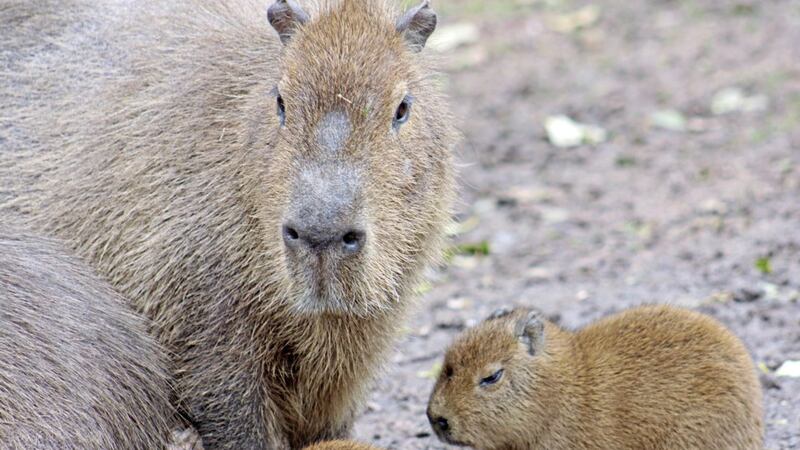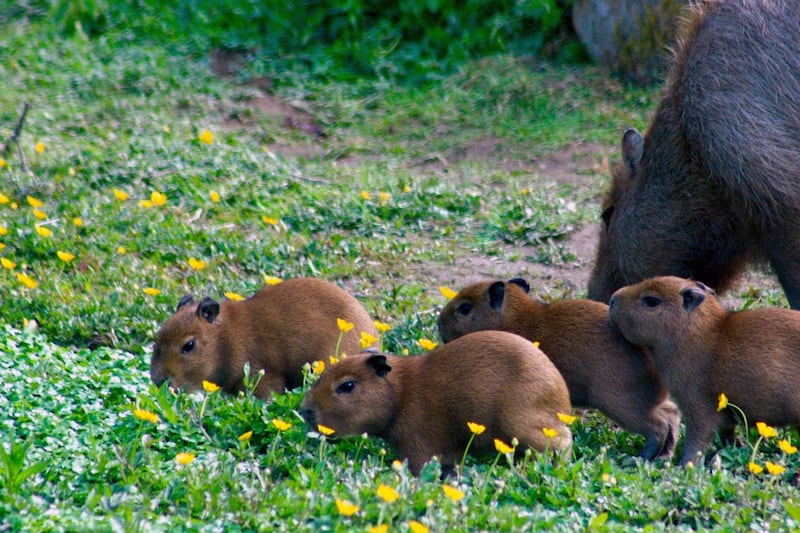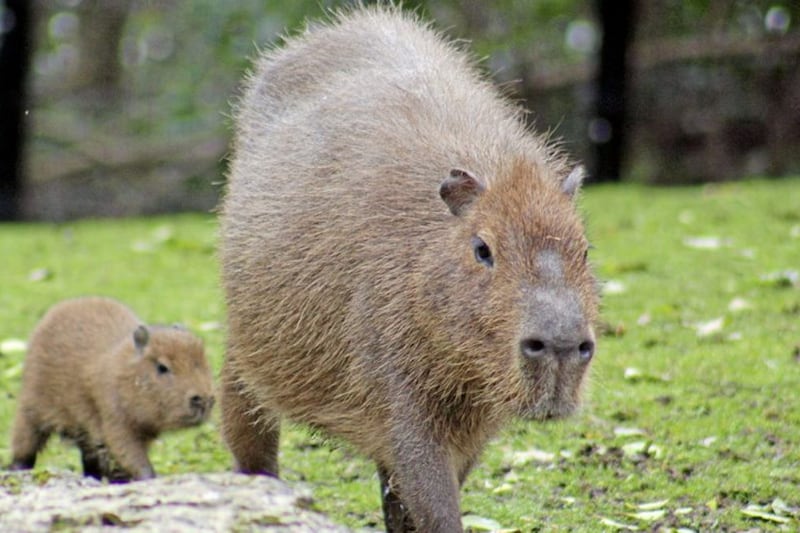BELFAST Zoo is celebrating the birth of the third set of capybara babies in the past year.
The zoo's capybara couple, Chester and Lola, have produced happy `capy' babies three times in the last nine months.
The cute love-birds welcomed the first pair in April 2018, followed by the second set in July, and the most recent babies in late December.
Belfast Zoo is now home to a herd of 17 capybaras though the male and female offspring have not yet been named.
The largest rodents in the world, capybaras are often found on Central and South American riverbanks, beside ponds and in marshes.
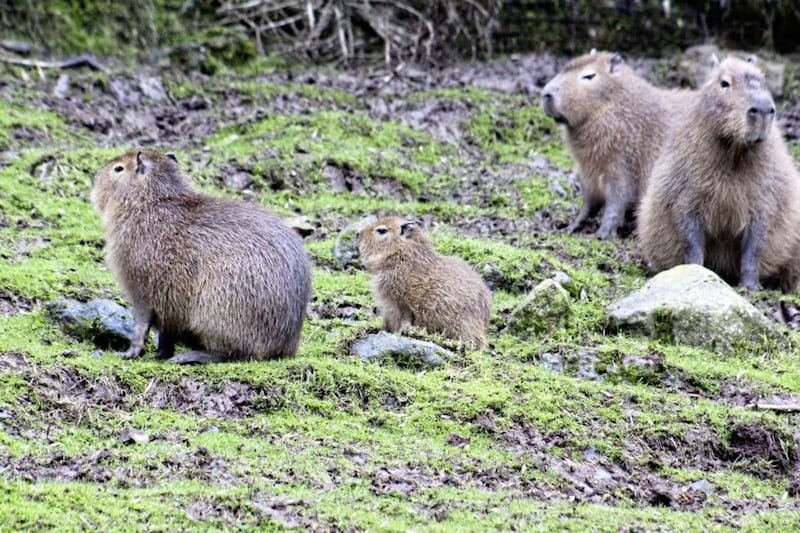
The semi-aquatic mammal can dive underwater for up to five minutes and typically live in family groups of 10 to 40. The vocal animals communicate using barks, whistles, huffs and purrs.
The species biggest threat is the leather in a capybara's skin which is in high demand in South America.
Belfast zoo keepers are allowing the babies and mother time to bond. The new arrivals have therefore not yet been sexed and do not have names.
Raymond Robinbson, Zoo curator, said: "Although the species is not currently classified as endangered, capybaras are facing increasing danger in their natural habitat, so it is important for zoos to raise awareness of this species and help to sustain their population.
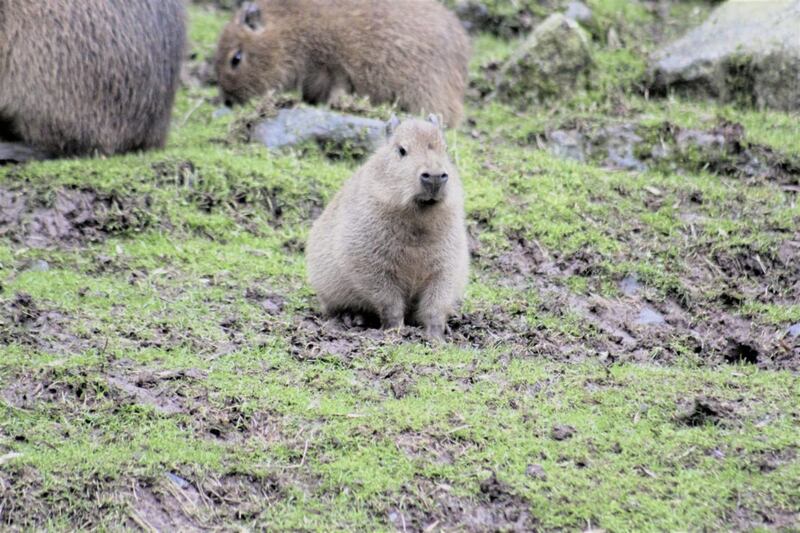
"We are delighted at Lola and Chester's successful births over such a short period of time. Our capybaras reside in a grassy habitat along our lake walk and live alongside some other South American species including giant anteater and Darwin's rhea. We hope our visitors will enjoy seeing our little capybara babies over the upcoming half-term holidays."
